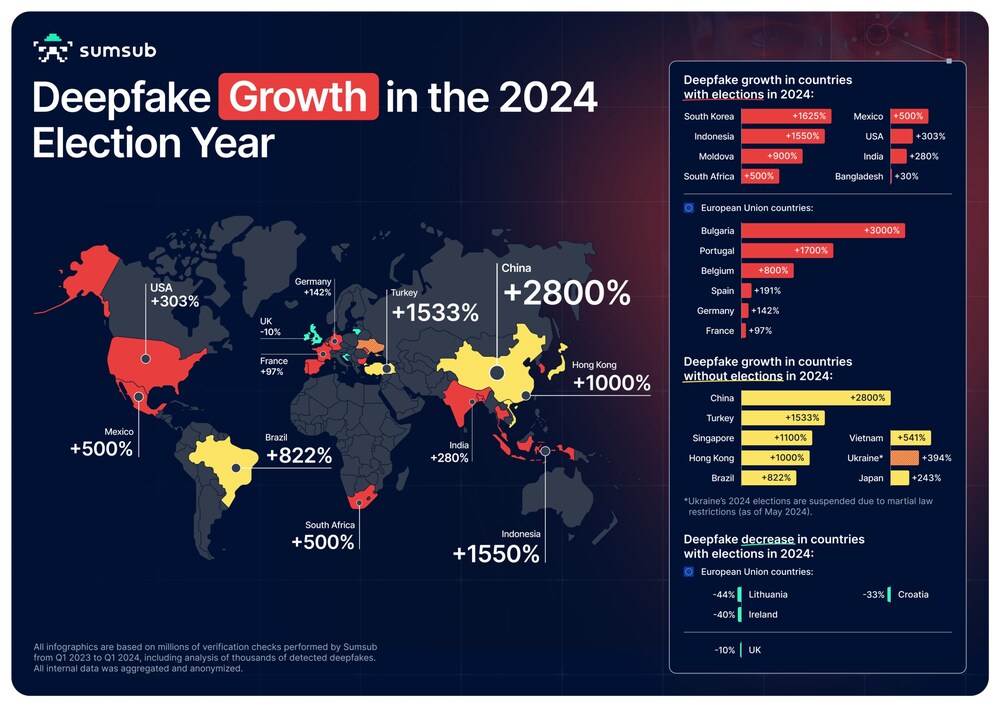Rise of DeepFakes

Authenticity Verification
Live Streaming
Sports: Ensures viewers watch live matches, not recordings.
Politics: Prevents manipulation of live speeches.
Interviews
Breaking News: Verifies eyewitness and expert interviews.
Investigative Journalism: Confirms interviews are genuine.
Disinformation Combat
Fact-Checking
Political Campaigns: Identifies and debunks deepfakes spreading false information about candidates.
Social Movements: Prevents manipulation of footage regarding social causes.
Social Media
Viral Videos: Detects and removes deepfake content spreading misinformation.
Online Communities: Flags deepfake content in forums and discussion groups.


Protecting Reputation
Individuals
Celebrities: Stops deepfakes used for harassment.
Politicians: Protects against credibility-damaging deepfakes.
Organizations
Corporations: Safeguards brand reputation from deepfakes.
Government Agencies: Defends against disinformation and trust erosion.
Additional Benefits
Legal Implications
Assists in legal proceedings by providing evidence of deepfake manipulation or fraud.
Educational Tools
Helps educate the public about deepfake dangers and identification methods.
Research and Development
Drives advancements in artificial intelligence, computer vision, and digital forensics.

Insight into how it works when partnering with us
Real-Time Audio/Video Analysis
Software Integration: The liveness detection algorithm is built into video editing or broadcasting software.
Analysis During Editing: As journalists edit, the software analyzes video in real-time, flagging potential liveness issues.
Automated Alerts: If a potential deepfake or impersonation is detected, the algorithm triggers an alert for further investigation.
API Integration
Third-Party Services: News organizations can utilize APIs from third-party liveness detection services.
Integration into Workflow: Journalists can upload video or image files for analysis via the API.
Automated Results: The service provides results, indicating if the content is likely genuine or manipulated.
Cloud-Based Solutions
Cloud-Based Platforms: Liveness detection services offer cloud platforms for journalists to upload and analyze content.
Collaboration: These platforms enable teamwork between journalists and editors to identify and address issues.
Hardware Integration
Specialized Cameras: Liveness detection can be integrated into cameras designed for journalism.
Real-Time Analysis: These cameras analyze footage in real-time, offering immediate feedback on content authenticity.
Workflow Automation
Integration with Existing Systems: Liveness detection can be integrated into newsroom workflows, automating content verification and issue flagging.
Efficiency Improvements: This automation saves journalists time and resources while ensuring content accuracy and authenticity.
Ethical Considerations
Privacy and Consent: When integrating liveness detection into media and journalism workflows, it’s essential to consider privacy and consent issues.
Transparency: News organizations should be transparent about their use of liveness detection technology and how it is used to verify content.
By integrating liveness detection algorithms into media and journalism software and workflows, news organizations can enhance the authenticity and credibility of their content, protect against misinformation, and build trust with their audiences.

